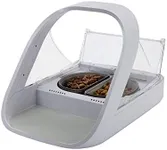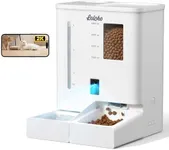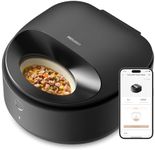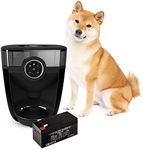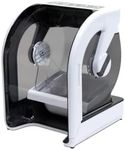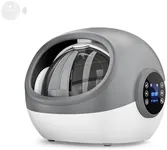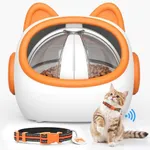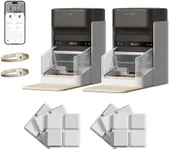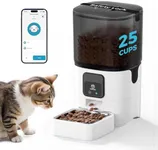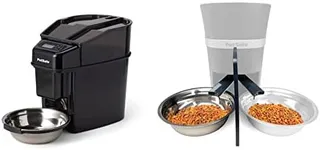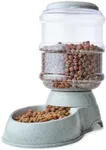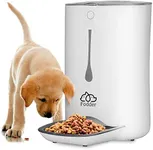Buying Guide for the Best Cat Feeder Microchip
Choosing the right microchip cat feeder can make a significant difference in managing your pet's diet and ensuring that each cat in a multi-pet household gets the right amount of food. A microchip cat feeder uses your cat's unique microchip or a special collar tag to control access to the food, which can be particularly useful if you have pets on different diets or if one pet tends to eat more than their share. When selecting a microchip cat feeder, consider the following key specifications to ensure you pick the best fit for your needs.Microchip CompatibilityMicrochip compatibility refers to whether the feeder can recognize and work with the type of microchip your cat has. This is important because not all feeders support all microchip types. Most feeders are compatible with the common 15-digit ISO 11784/11785 microchips, but it's essential to check if your cat's microchip is supported. If your cat doesn't have a microchip, some feeders come with a collar tag that can be used instead. Ensure the feeder you choose is compatible with your cat's identification method to avoid any issues.
CapacityCapacity refers to the amount of food the feeder can hold. This is important because it determines how often you need to refill the feeder. Capacities can range from a few cups to several pounds of food. If you have one cat or a small cat, a feeder with a smaller capacity may be sufficient. For multiple cats or larger cats, a feeder with a larger capacity will be more convenient as it will require less frequent refilling. Consider your cat's eating habits and the number of cats you have when choosing the right capacity.
Portion ControlPortion control is the feeder's ability to dispense a specific amount of food at each feeding. This is crucial for managing your cat's diet and preventing overeating. Some feeders allow you to set precise portions, while others may have more basic settings. If your cat is on a special diet or needs to lose weight, a feeder with accurate portion control is essential. For cats with no specific dietary needs, a feeder with basic portion control may suffice. Think about your cat's dietary requirements when selecting a feeder with the appropriate portion control features.
Number of MealsThe number of meals refers to how many times the feeder can dispense food throughout the day. This is important for maintaining a consistent feeding schedule, especially if you are not home during the day. Some feeders can be programmed to dispense multiple meals per day, while others may only offer a few. If your cat needs to eat several small meals a day, choose a feeder that can accommodate this schedule. For cats that eat less frequently, a feeder with fewer meal settings may be adequate. Consider your cat's feeding routine when choosing the number of meals.
Ease of CleaningEase of cleaning refers to how simple it is to clean the feeder. This is important for maintaining hygiene and ensuring your cat's food stays fresh. Some feeders have removable, dishwasher-safe parts, making them easier to clean. Others may require more manual cleaning. If you prefer low-maintenance options, look for feeders with easy-to-clean features. Regular cleaning is essential to prevent the buildup of bacteria and ensure your cat's health, so choose a feeder that fits your cleaning preferences and schedule.
Power SourceThe power source refers to how the feeder is powered. This is important for ensuring the feeder operates reliably. Some feeders are battery-operated, while others plug into an electrical outlet. Battery-operated feeders offer more flexibility in placement but require regular battery changes. Plug-in feeders provide consistent power but need to be placed near an outlet. Consider your home setup and whether you prefer the convenience of batteries or the reliability of a plug-in model when choosing the power source for your feeder.
